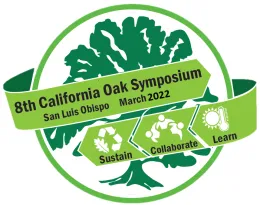Adopting Ranch Management to Prolonged Drought and Changing Plant Species Composition

Royce Larsen, UC Cooperative Extension, San Luis Obispo County
Over the centuries there have been many droughts of differing intensities and durations. The recent drought of 2012-2016 was warmer than other droughts, as well as dry. This combination made the recent drought worse than any other during the last 500 years, perhaps even 1200 years. The California Central Coast, with its oak woodland savanna’s and annual rangelands, was rated in the “exceptional drought” category for many months during this period. This caused many oak trees to die or become weakened, and the weakened trees continued to die into 2020. The lowest forage production recorded over the last 20 years was in 2014 at 95% below average. As a result, livestock numbers were reduced by 60-70%. As of 2020, most of the ranches still have not fully restocked their herds. Along with the forage reduction, there was a shift to a forb domination, filaree (Erodium sp.) and bur clover (Medicago polymorhpa) being the most prevalent species. Within the grass species component though, there was a shift in dominance from soft chess brome (Bromus hordeaceaus) to red brome (Bromus rubens). However, the coastal areas had less drought impact, and ryegrass (Lolium perenne) and wild oats (Avena sp.) were still most common. Crude protein (CP) is higher in forbs than in the annual grasses, and both have higher CP during their early vegetative stages. However, once the forage dries in late spring the CP decreases rapidly. Crude protein in forage drops below the nutrient requirements for livestock throughout the summer period. There is a constituent of late summer growing plants, mostly forbs, that have high CP values. But many of these are toxic and may become a problem for livestock. When available forage is low, either because of quality or quantity, cattle tend to seek out feed that will meet their nutritional requirements and poisonings can occur. With droughts expected to increase in both intensity and duration, having enough forage to meet the nutritional requirements of livestock may become even more difficult requiring improved management practices or even changes in herd types, such as stockers instead of cow/calf operations.
